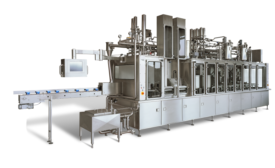Home » Keywords: » hygienic equipment design
Items Tagged with 'hygienic equipment design'
ARTICLES
Third-party verification and inspection required for usage of 3-A logo.
Read More
Optimizing clean-in-place (CIP) for hygienic design
Breaking through constraints to achieve a higher level of performance.
December 26, 2024
Create an effective preventive controls plan
Equipment design criteria for processing equipment play an indispensable role.
May 7, 2021
Distance training in the COVID-19 era
Members of the 3-A SSI community share how the coronavirus pandemic affected their operations trainings.
February 10, 2021
Understand key 3-A Sanitary Standards terms
Equipment must be cleanable, readily accessible and substantially flush.
December 10, 2020
3-A SSI expands suite of free e-learning modules on hygienic equipment design
The new modules bring the world of hygienic equipment design to audiences anywhere, any time.
October 9, 2017
Verifying the integrity of hygienic equipment design
Processors need to know that the policies and procedures they’re using are sufficient to guarantee the integrity of hygienic equipment design.
August 10, 2017
The keys to maintaining hygienic design
Understanding all the fundamental issues in creating and maintaining hygienic equipment design is important, from facility design requirements to hygienic welding.
August 23, 2016
Clean machines
Hygienic design of dairy equipment is in the spotlight
Hygienic machine design allows dairy manufacturers to minimize downtime and waste.
August 2, 2016
Stay ahead of the curve. Unlock a dose of cutting-edge insights.
Receive our premium content directly to your inbox.
SIGN-UP TODAYCopyright ©2025. All Rights Reserved BNP Media.
Design, CMS, Hosting & Web Development :: ePublishing





